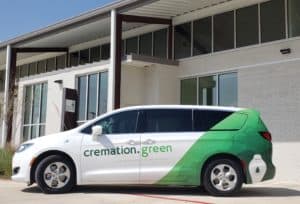Funeral costs can come as a brutal shock during an already difficult time. From the casket and embalming to the memorial service and the burial plot, funerals often cost more than $15,000.
Another downside to burial is its environmental toll. The toxic embalming chemicals leak into the soil, and maintaining memorial plots overtaxes land and water resources.
Cremation is a common end-of-life tradition in many parts of the world. It is an accepted practice among many faiths and is becoming more popular each year. Cremation can also save money and the environment.
Whether you’re planning services for a loved one or arranging your own funeral options, consider how cheap cremation provides an affordable alternative to burial.
Benefits of Cremation Services
Cheap cremation eases financial burdens and environmental tolls. It also provides plenty of other benefits.
Preserve Tradition…
Being cremated doesn’t mean you have your ashes scattered to the wind or sea (though that is an option if you want it!) Many families still want to bury the remains in a family plot or crypt. Cremated remains are cheaper to bury and take up far less space than a casket, but can still keep with the family’s tradition.
…or Break With it
Are you the nonconformist in your family? Looking for a way to distinguish yourself from the rest of the crowd? Cremation introduces ways to break with the humdrum and formal funeral traditions. Cremated remains can be made into jewelry. The memorial service can take place anywhere – the beach, the mountains, the woods.
Ease and Options
Cremated remains are much simpler to deal with and can be transported easily as well. Cremation provides an alternative to a traditional funeral service. The remains also may be kept by multiple family members, or taken to a place that the deceased loved during their life.
Spread the Ashes – and the Word
The more that people choose cremation, the more commonplace it will become. Though the rate of cremation is on the rise, many people still do not know about alternatives to traditional burial. Choosing cremation helps spread the word that this process is easier, cheaper, and respectful.
The Cremation Process
Cremation is a process that reduces the body to its basic elements through flame or high heat. The only remains are the bones, which are pulverized and provided to the family of the deceased.
There are two main cremation processes: water cremation and flame cremation.
In water cremation, the body is placed in a container filled with an alkaline solution. The solution is brought to high heat and pressure, breaking down the body into its constituent elements.
Water cremation closely mimics the natural decomposition process. Since this process does not involve burning anything, no toxic gases or byproducts are released into the air. It is a natural and eco-friendly way to cremate.
Water cremation may be too outside the norm for you, and that’s okay. The more familiar method of cremation is flame cremation. Flame cremation places the body in a crematorium to burn.
Water cremation is a more environmentally friendly option. However, modern advances provide ways to make carbon-neutral flame cremation facilities. Both of these cheap cremation options are more environmentally sound than burial.
Choosing the Right Cremation Service
Unless the deceased has left clear instructions about their funeral, you may face making many decisions. You may be grieving and not have the clearest frame of mind.
Here are some questions and considerations that can help guide you through this difficult process. The main factors to consider are cost, wishes of the deceased, and family preferences.
Does the deceased want a traditional funeral service?
If money is no object and your family values the ritual of a traditional funeral, add cremation to the end of the service. You can still have an open casket, which would be rented, and cremate the body after the memorial. The embalming and casket rental will add to the price of the service.
Would the deceased prefer an informal service?
In this case, the service does not have to include a casket and embalming. The cremated remains could be present in an urn or other forms that could be shared among relatives. This type of service provides significant cost savings.
Some people prefer no memorial service.
If you don’t want to include a viewing or service, you can choose direct cremation. The body will be cremated and the remains returned to the family. Aside from whole body donation, this would be the most cost-effective cremation option.
Would you donate your body to science?
Many of us have chosen to be organ donors, but there is another option that will also benefit the world after your death. You can donate your whole body in the interest of science. Usually, this involves anatomy students inspecting your organs and possibly learning about the cause of death.
After the inspection, the organization you donated to will cover the costs of your cremation. Remains would be returned to your family within five weeks.
Cheap Cremation Is a Great Alternative to Burial
Most of us don’t want to think about our own funeral services. But planning your own end-of-life arrangements can make things easier for your loved ones.
Funeral costs are high and will continue to rise. Cheap cremation provides an excellent alternative.
Cost is not the only factor to consider. Traditional burial creates environmental pollution that cremation avoids. Whether you’re arranging for your own service or planning the funeral of a loved one, learn more about our services. You may find that cremation is the right option for you and your family.






